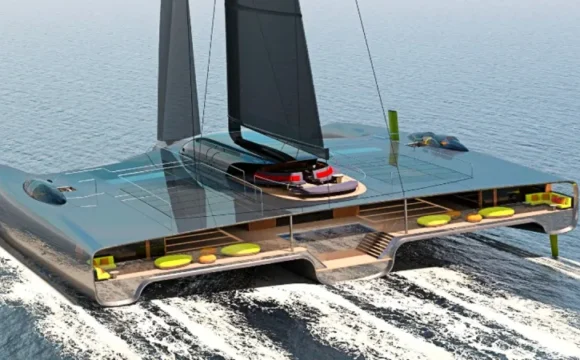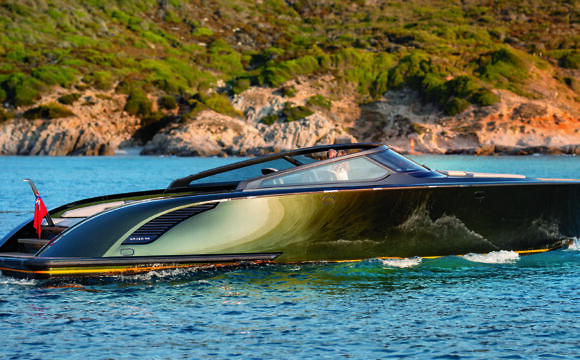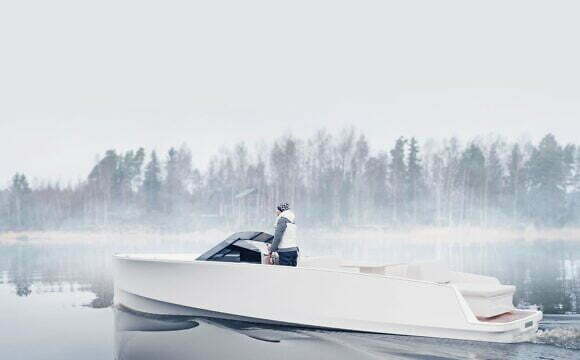Change is inevitable
Even at first sight, the Kormaran K7 does not looks like a typical 23-foot/7m speedboat. The sleek, dynamic body is arresting in its shape as a formidable bullet, but all eyes will be drawn to the hydraulic arms folded into its sides.
In its default setting as a monohull, the Kormaran K7 can jet around at zippy speeds of 44 knots. And here’s when choice sets in. The press of a button will activate the outrigger hulls. Deploy them partially and the Kormaran K7 becomes a catamaran; deploy them fully and the body submerges, becoming a trimaran. T
If all that technological metamorphosis recalls the transforming concepts emerging from automotive research departments recently, that’s not an accident. Dr. Oliver Kormann, the Austrian brain behind the Kormaran K7, used his experience in the German automotive industry as the basis of the speedboat. “(My) goal was to combine the experience of driving a super sports car with the precise construction of the aviation industry, using state-of-the-art materials," he says.
State-of-the-art here being ultra-lightweight materials. The overall structure of the Kormaran K7 is carbon fibre, while the hydraulic arms are a blend of titanium and stainless steel. Many of the parts are actually based on Formula 1 racing technology, which goes a long way to explaining its kinetic energy. Plushness is not forgotten though. The interior is trimmed in soft leather, while the hull and deck surfaces are covered in black-jointed teak wood – perfect for sunbathing. Built in Salzburg, Austria, this transformer boat’s price starts at €1 million (THB 39million), with a whole range of customisations available.










